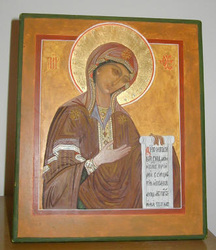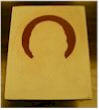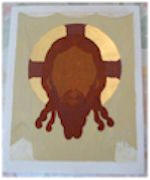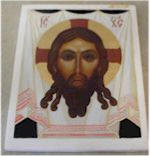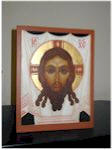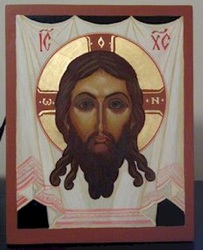Iconography (Orthodox Christian liturgical art)

This is my new venture. I was attracted to Iconography finding the similarity of this art to Tanjore painting which I use to work on. I’m still in the process of learning the details about Iconography. I would like to thank Ms.Yaroslava Surmach Mills who shared her knowledge about this authentic art with me.
Background
Iconography was developed in the 4th Century A.D. in the great city of Byzantium, the Eastern part of the Roman Empire. Icon is a Greek word that means image. Icons have a very prominent and important place in the worship and piety of the Orthodox Church. They are deeply rooted in the gospel, and have been cherished and venerated by Christians from the earliest times. Icons express in images the spiritual realities that are inexpressible in words and inaccessible to our rational mind. Through the icon image we catch a glimpse of God's Light, Grace, and Presence. In the early Christian years (5th cent.), portraits of the Madonna Enthroned with the Christ Child on her lap, and half-portraits of the Madonna or Christ were very popular. After the 9th century, icons became more complex, much more descriptive. Episodes from the Old and New Testaments, the Feast, Life of the Virgin, and Deeds and Sufferings of Saints were depicted.
Background
Iconography was developed in the 4th Century A.D. in the great city of Byzantium, the Eastern part of the Roman Empire. Icon is a Greek word that means image. Icons have a very prominent and important place in the worship and piety of the Orthodox Church. They are deeply rooted in the gospel, and have been cherished and venerated by Christians from the earliest times. Icons express in images the spiritual realities that are inexpressible in words and inaccessible to our rational mind. Through the icon image we catch a glimpse of God's Light, Grace, and Presence. In the early Christian years (5th cent.), portraits of the Madonna Enthroned with the Christ Child on her lap, and half-portraits of the Madonna or Christ were very popular. After the 9th century, icons became more complex, much more descriptive. Episodes from the Old and New Testaments, the Feast, Life of the Virgin, and Deeds and Sufferings of Saints were depicted.
